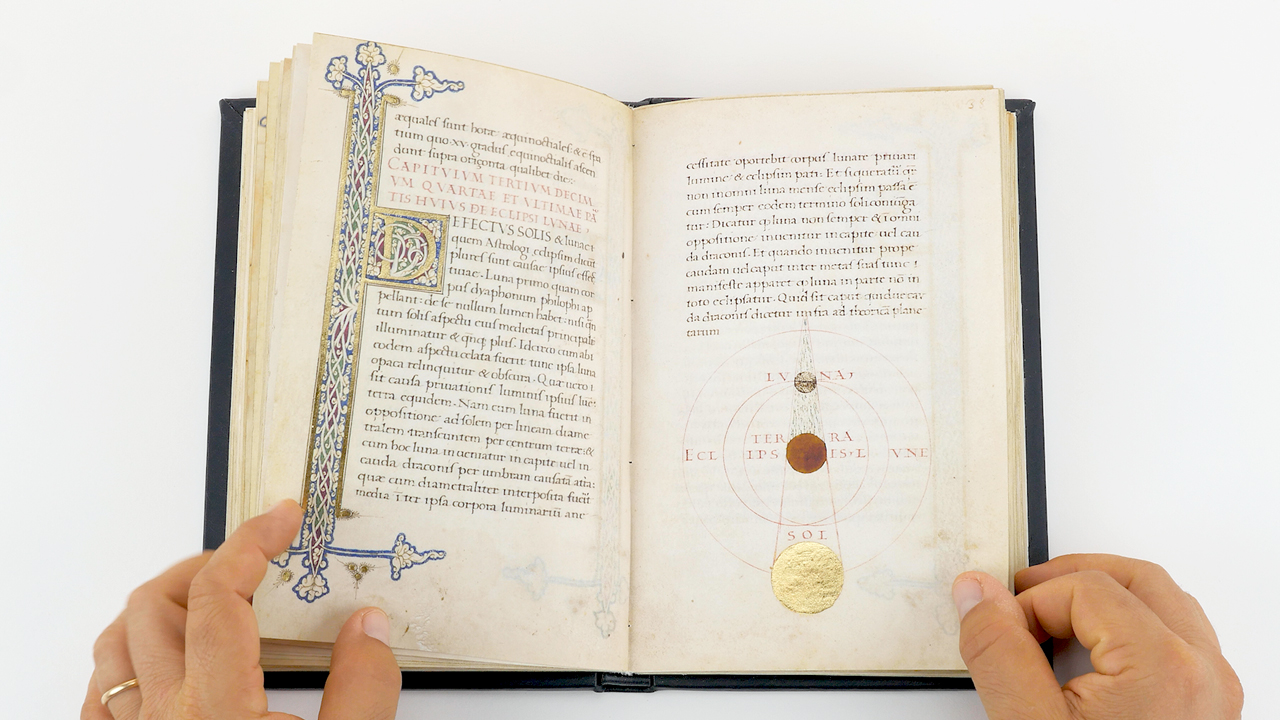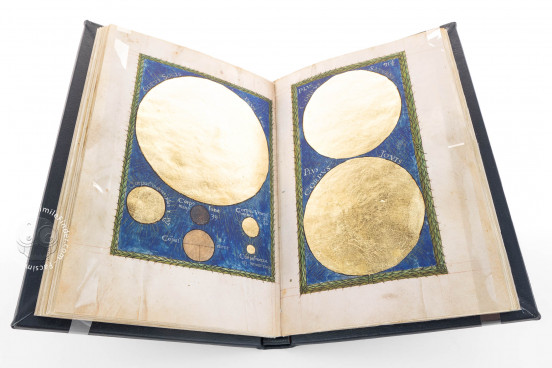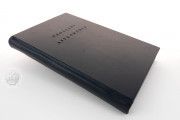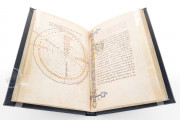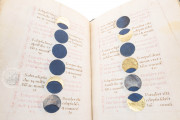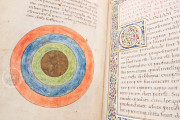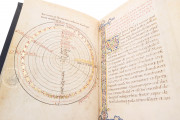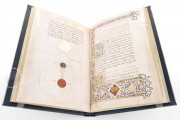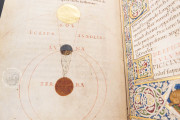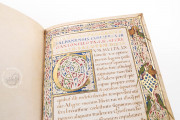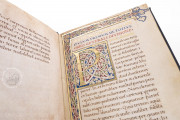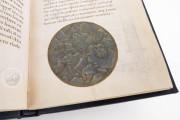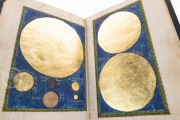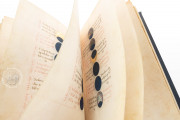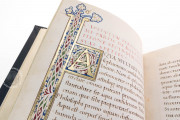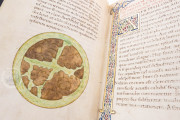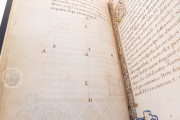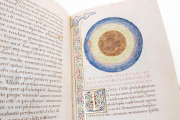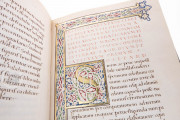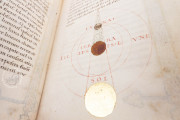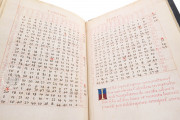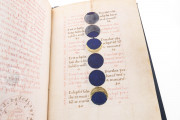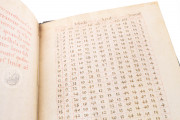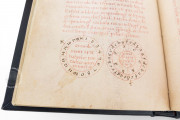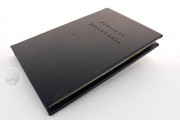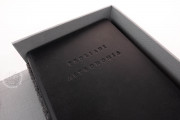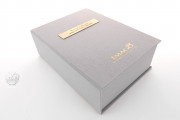The Astronomical Treatise manuscript in the Rylands Library is a richly illuminated copy of the Astronomia by Cristiano Proliano. Produced around 1478 in Naples, it presents geometry, cosmology, and astronomical theory rather than observational astronomy. The manuscript features thirty-nine painted borders, some of which are populated with animals and putti; forty-nine decorated initials; and astronomical diagrams of the sun, moon, and planets, all highlighted with gold. The illumination has been attributed to Gioacchino di Giovanni, librarius et miniator to Ferdinand, King of Naples and Aragon, whose son's coat of arms appears in the book.
Little is known about Cristiano Proliano beyond his origins in the small Tuscan town of Balbano and his association with the Neapolitan court of Ferdinand II.
Script, Layout, and Illustration
MS 53 is written on vellum in an elegant humanist script (Roman hand). The text is enriched by a sequence of striking astronomical diagrams; representations of the Sun, Moon, and planets are highlighted with gold leaf, and the volume includes ornate astronomical tables. Elaborate white-vine borders introduce each chapter, embellished with parrots, other birds, animals, and putti.
Structure and Content
The treatise is divided into five principal parts comprising thirteen chapters. The opening section expounds the four elements that constitute the celestial sphere according to Aristotelian doctrine, followed by treatments of the solar system and aspects of astronomical geography, including meridians, parallels, and the tropics. Particularly noteworthy are the descriptions of lunar and solar eclipses, which include an ultimately unsuccessful attempt to explain how the Sun might be obscured by a much smaller body. The work concludes with tables of conjunctions and oppositions of the celestial bodies. The eclipse observations recorded from 1478, with stated commencement and duration, are explicitly referenced to the “Meridian of Naples.”
Attribution and Decorative Program
The manuscript’s illumination has at times been attributed to Gioacchino di Giovanni de Gigantibus. However, Andrew Phillips—whose MA research in Medieval Studies included a detailed examination of MS 53—has identified several stylistic discrepancies between this codex and the established corpus of Gigantibus. The decoration is dominated by bianchi girari (white vine-stem borders), a hallmark of fifteenth-century Italian humanist manuscripts. Phillips further notes the inclusion of parakeets—commonly associated with Naples—and butterflies—emblematic of Florence—within the borders. Their juxtaposition is striking given that Naples and Florence were at war for much of the 1470s; the manuscript’s former owner and patron, Cardinal Giovanni of Aragon, played a central role in peace negotiations between the two cities.
Patronage and Heraldry
One of the manuscript’s most prominent illuminations appears on the opening page: a coat of arms that M. R. James once suggested belonged to Ferdinand II of Aragon. In fact, the arms in MS 53 are the mirror image of Ferdinand’s and correspond instead to those of his son, the Cardinal of Aragon (Giovanni). James was likely misled by the golden crown surmounting the shield—an emblem that would typically indicate royal ownership. It is probable that the original cardinal’s hat was painted over when Giovanni predeceased his father and his library was integrated into the royal Aragonese collection.
Provenance
Recent research has clarified the manuscript’s trajectory from its Neapolitan origins to England, tracing its passage through French collections, including the library of the Duchy of La Vallière, and through the hands of the “Napoleon of booksellers,” Bernard Quaritch. The manuscript was subsequently owned by William Morris, an avid bibliophile with a professional interest in the aesthetics of illumination; it was sold to him with a suggestion that the decoration might be by Gioacchino de Gigantibus, an attribution now open to question on stylistic grounds. Morris later sold the manuscript—an act he reportedly regretted—and it was acquired by the 26th Earl of Crawford for £42.
Binding
The manuscript’s modern binding is executed in blue morocco goatskin.
We have 1 facsimile edition of the manuscript "Astronomical Treatise by Christianus Prolianus": Astronomia di Cristiano Proliano facsimile edition, published by Imago, 2019
Request Info / Price
